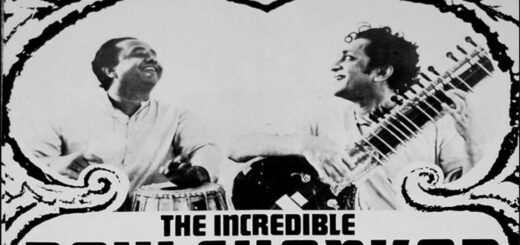Independence Day in India: A Time to Reflect on the Struggle for Freedom

What is India Independence Day?
India Independence Day is celebrated on August 15th each year to remember and celebrate the nation’s liberation from British rule in 1947. The day honors the sacrifices of those who fought for independence and symbolizes India’s self-governance.
The Indian Independence Act, passed by the British Parliament, came into effect on this significant day, granting legislative sovereignty to the Indian Constituent Assembly. The occasion is marked by enthusiastic celebrations nationwide, including flag hoisting, parades, cultural performances, and speeches. In New Delhi, the capital city, the Prime Minister hoists the national flag at the Red Fort, followed by an address to the nation.
The holiday unites Indians to celebrate their shared history and culture while also reflecting on the challenges overcome and reaffirming their commitment to freedom and democracy.
People wear traditional attire or the national colors of saffron, white, and green to express their patriotism and love for the country. It’s also a time when people reflect on India’s journey toward progress, unity, and peace.
How the British Came to Power in India: A Timeline
- 1600: The British East India Company is founded with a royal charter from Queen Elizabeth I.
- 1612: The company establishes its first permanent trading post in Surat, India.
- 1639: The company establishes its first Fort William in Calcutta, India.
- 1757: The company defeats the Nawab of Bengal at the Battle of Plassey. This victory gives the company control of Bengal, and it marks the beginning of British rule in India.
- 1765: The company is granted the Diwani of Bengal, which gives it the right to collect taxes in Bengal.
- 1773: The British Parliament passes the Regulating Act, which gives the company more control over its affairs in India.
- 1813: The British Parliament passes the Charter Act, which gives the company a monopoly on trade with India for another 20 years.
- 1833: The British Parliament passes the Charter Act, which abolishes the company’s monopoly on trade with India.
- 1857: The Indian Rebellion of 1857, also known as the Sepoy Mutiny, breaks out. The rebellion is eventually suppressed by the British, but it leads to the end of the company’s rule in India.
- 1858: The British Crown takes over direct control of India from the company.
- 1947: India gains independence from the British.
The British arrival in India was a complex and multifaceted event. It was influenced by a variety of factors, including the company’s desire for trade, the political situation in India, and the military strength of the British. The British occupation of India had a profound impact on the country, and it continues to be felt today.
The first British people entered India in the early 1600s. They were traders from the East India Company, which was a British company that had been granted a monopoly on trade with the East Indies. The first British traders arrived in India at the port of Surat in 1608. They were initially welcomed by the Mughal rulers of India, who saw them as a source of new goods and technology.
The British traders soon began to expand their operations in India. They established factories and trading posts all over the country. They also began to get involved in Indian politics, often siding with one ruler against another.
In 1757, the British East India Company defeated the Nawab of Bengal at the Battle of Plassey. This victory gave the company control of Bengal, which was one of the richest provinces in India. The company’s power continued to grow in the following years, and by the early 19th century, it had become the de facto ruler of most of India.
The British rule in India lasted for over 200 years. It had a profound impact on the country, both positive and negative. On the one hand, the British brought many benefits to India, such as modern technology, education, and infrastructure. On the other hand, they also exploited India’s resources and people, and their rule was often marked by violence and oppression.
The British rule in India lasted until August 15, 1947, when India finally gained its independence following a long and arduous struggle led by various Indian freedom fighters and the Indian National Congress. The country was then partitioned into two independent nations, India and Pakistan.
Here are some of the reasons why the British came to India:
- Trade: The British East India Company was primarily interested in trade. They wanted to establish trading posts in India so that they could sell their goods and buy Indian goods.
- Power: The British also wanted to gain power in India. They saw India as a wealthy and strategically important country, and they wanted to control it.
- Religion: Some British people also came to India to spread Christianity. They believed that it was their duty to convert the Indians to Christianity.
The British entered India as traders, but they eventually acquired political power. They were able to do this because they were more technologically advanced than the Indians, and they had a strong military. The British rule in India was marked by exploitation and oppression, and it had a profound impact on the country. The British finally granted India its independence in 1947.
The British rule in India had a profound impact on the country. It changed the way India was governed, the way Indians lived, and the way India interacted with the outside world. The British rule also left a legacy of both positive and negative aspects.
Here are some additional details about each of these points:
- The British East India Company: The British East India Company (EIC) was a private company that was granted a monopoly on trade with India by Queen Elizabeth I in 1600. The EIC was initially a trading company, but it soon began to acquire political power in India.
- Trading posts: The EIC began to establish trading posts in India in the early 17th century. These trading posts were located in major ports, such as Surat, Bombay, and Madras. The EIC traded in spices, textiles, and other goods.
- Political power: Over time, the EIC began to acquire political power in India. This was due to a number of factors, including the EIC’s military power, its economic strength, and its political maneuvering.
- Battle of Plassey: The Battle of Plassey was a decisive victory for the EIC in 1757. The EIC defeated the Nawab of Bengal, Siraj ud-Daulah, at the Battle of Plassey. This victory gave the EIC control of Bengal, and it marked the beginning of British rule in India.
How Indians fought back against British
Indians fought back against the British in a number of ways in the beginning. Here are some of the most common methods:
- Guerrilla warfare: Guerrilla warfare is a type of warfare in which small, mobile groups of fighters attack larger, more powerful forces. This was a popular tactic for Indians fighting against the British because it allowed them to use their knowledge of the terrain to their advantage.
- Propaganda: Propaganda is the spreading of ideas or information to promote or damage a cause. Indians used propaganda to spread awareness of British atrocities and to motivate people to fight for independence.
- Civil disobedience: Civil disobedience is a nonviolent form of protest in which people refuse to obey unjust laws. This was a popular tactic for Indians fighting against the British because it allowed them to challenge British rule without resorting to violence.
- Religious resistance: Some Indians used their religion as a source of strength and inspiration in their fight against the British. For example, the Indian Rebellion of 1857 was led by sepoys, who were Indian soldiers who had converted to Islam or Hinduism.
These are just a few of the ways in which Indians fought back against the British in the beginning. The Indian independence movement was a long and complex struggle, and there were many different ways in which Indians fought for their freedom.
Here are some examples of specific rebellions and uprisings that Indians fought against the British:
- The Santhal Rebellion (1855-56): The Santhals were a tribal people who lived in the eastern Indian state of Bengal. They rebelled against the British in 1855 because they were unhappy with the British government’s policies. The rebellion was eventually suppressed by the British, but it showed that the Indian people were willing to fight for their freedom.
- The Indian Rebellion of 1857: The Indian Rebellion of 1857, also known as the Sepoy Mutiny, was a major uprising against British rule in India. The rebellion was sparked by a number of factors, including the introduction of new cartridges that were greased with cow and pig fat, which were considered to be unclean by Hindus and Muslims. The rebellion was eventually suppressed by the British, but it showed that the Indian people were willing to fight for their freedom.
- The Non-Cooperation Movement (1920-22): The Non-Cooperation Movement was a major nonviolent protest movement led by Mahatma Gandhi. The movement was launched in response to the Rowlatt Act, which gave the British government sweeping powers to repress dissent. The movement was a major success, and it forced the British to repeal the Rowlatt Act.
- The Quit India Movement (1942): The Quit India Movement was a major nonviolent protest movement led by Mahatma Gandhi. The movement called for the British to leave India immediately. The movement was a major success, and it helped to pave the way for India’s independence in 1947.
The Indian independence movement was a long and complex struggle, and there were many different ways in which Indians fought for their freedom. The methods that Indians used to fight back against the British varied over time, but they all showed the determination of the Indian people to achieve independence.
The events that led to the freedom of India – a Timeline
The following are some of the events that led to the freedom of India:
- 1857: The Indian Rebellion of 1857, also known as the Sepoy Mutiny, was a major uprising against British rule in India. The rebellion was sparked by a number of factors, including the introduction of new cartridges that were greased with cow and pig fat, which were considered to be unclean by Hindus and Muslims. The rebellion was eventually suppressed by the British, but it showed that the Indian people were willing to fight for their freedom.
- 1905: The Partition of Bengal was a political decision made by the British government to divide the Indian province of Bengal into two parts. The partition was met with widespread protests from Indian nationalists, who saw it as an attempt to divide and weaken the Indian independence movement.
- 1919: The Jallianwala Bagh Massacre was a mass shooting in Amritsar, Punjab, by British Indian Army soldiers on April 13, 1919. The massacre was ordered by Brigadier-General Reginald Dyer, and it resulted in the deaths of over 370 people and the injury of over 1,200 others. The massacre was a major turning point in the Indian independence movement, and it led to widespread anger and resentment against the British.
- 1920: The Non-Cooperation Movement was a major nonviolent protest movement led by Mahatma Gandhi. The movement was launched in response to the Rowlatt Act, which gave the British government sweeping powers to repress dissent. The movement was a major success, and it forced the British to repeal the Rowlatt Act.
- 1930: The Salt March was a major nonviolent protest movement led by Mahatma Gandhi. The march was launched in protest of the British monopoly on salt production. The march was a major success, and it helped to raise awareness of the Indian independence movement around the world.
- 1942: The Quit India Movement was a major nonviolent protest movement led by Mahatma Gandhi. The movement called for the British to leave India immediately. The movement was a major success, and it helped to pave the way for India’s independence in 1947.
- 1947: India gained independence from British rule on August 15, 1947. The independence was achieved through the Indian Independence Act 1947, which was passed by the British Parliament. The act divided British India into two dominions, a Hindu-majority India and a Muslim-majority Pakistan.
These are just some of the events that led to the freedom of India. The Indian independence movement was a long and complex struggle, and there were many different factors that contributed to its success.
How did India win against British rule against their advanced weapons and diplomacy?
India won against British rule against their advanced weapons and diplomacy in a number of ways. These included:
- The use of nonviolent resistance: The Indian independence movement was largely based on the use of nonviolent resistance, led by Mahatma Gandhi. This was a major challenge to the British, who were accustomed to using force to suppress dissent.
- The support of the international community: The Indian independence movement received widespread support from the international community, including from the United States and the Soviet Union. This support helped to put pressure on the British to grant India its independence.
- The economic cost of the war: The British were also facing economic problems at the time, and they were unwilling to continue to spend money on the Indian occupation. This made them more willing to negotiate with the Indian independence movement.
In addition to these factors, the British were also facing internal challenges, such as the rise of the Labour Party, which was opposed to colonialism. These challenges made it more difficult for the British to maintain their rule in India.
The Indian independence movement was a long and complex struggle, and there were many different factors that contributed to its success. The use of nonviolent resistance, the support of the international community, and the economic cost of the war were all important factors in India’s victory.
Here are some additional details about each of these factors:
- The use of nonviolent resistance: Mahatma Gandhi was a master of nonviolent resistance, and he used it to great effect in the Indian independence movement. Gandhi believed that nonviolent resistance was the most powerful weapon that the Indian people had against the British. He showed that it was possible to challenge the British without resorting to violence, and he inspired millions of Indians to follow his lead.
- The support of the international community: The Indian independence movement received widespread support from the international community, including from the United States and the Soviet Union. This support helped to put pressure on the British to grant India its independence. The United States and the Soviet Union were both emerging superpowers at the time, and they were not interested in seeing the British Empire continue to grow. They both supported the Indian independence movement in order to weaken the British Empire.
- The economic cost of the war: The British were also facing economic problems at the time, and they were unwilling to continue to spend money on the Indian occupation. This made them more willing to negotiate with the Indian independence movement. The British Empire was facing financial difficulties after World War II, and they were looking to cut costs. They were also facing challenges from other colonies, such as Kenya and Malaya. This made them more willing to grant India its independence in order to focus on other areas.
In addition to these factors, the British were also facing internal challenges, such as the rise of the Labour Party, which was opposed to colonialism. These challenges made it more difficult for the British to maintain their rule in India.
The Indian independence movement was a long and complex struggle, and there were many different factors that contributed to its success. The use of nonviolent resistance, the support of the international community, and the economic cost of the war were all important factors in India’s victory.
What Indians can learn from this history?
There are many lessons that Indians can learn from the history of the Indian independence movement. These include:
- The power of nonviolent resistance: The Indian independence movement showed that nonviolent resistance can be a powerful weapon against oppression. Mahatma Gandhi’s methods of nonviolent resistance inspired people around the world, and they continue to be used by activists today.
- The importance of unity: The Indian independence movement also showed the importance of unity. The Indian people were divided by religion, caste, and language, but they were able to unite in their struggle for independence. This unity was essential to the success of the movement.
- The importance of international support: The Indian independence movement also showed the importance of international support. The Indian people received widespread support from the international community, which helped to put pressure on the British to grant India its independence.
- The importance of perseverance: The Indian independence movement was a long and difficult struggle. It took many years and many sacrifices for the Indian people to achieve their goal. This shows the importance of perseverance in the face of adversity.
These are just some of the lessons that Indians can learn from the history of the Indian independence movement. These lessons are still relevant today, and they can help to inspire Indians to fight for their rights and to build a better future for their country.
Here are some additional thoughts on what Indians can learn from this history:
- The importance of democracy: The Indian independence movement was based on the principles of democracy and self-determination. This shows the importance of these principles, and it can inspire Indians to continue to fight for democracy in their country.
- The importance of diversity: The Indian independence movement was a diverse movement, and it included people from all walks of life. This shows the importance of diversity, and it can inspire Indians to continue to build a diverse and inclusive society.
- The importance of hope: The Indian independence movement was a hopeful movement, and it showed that anything is possible if people work together. This can inspire Indians to continue to hope for a better future, even in the face of challenges.
What British can learn from this?
The British can learn a lot from the history of the Indian independence movement. Here are some of the lessons that the British can learn:
- The importance of respecting human rights: The Indian independence movement was a struggle against British colonialism, which was often characterized by human rights abuses. This shows the importance of respecting human rights, even in the context of a colonial relationship.
- The importance of listening to the voices of the people: The British government often ignored the voices of the Indian people, which led to resentment and anger. This shows the importance of listening to the voices of the people, even if they are different from your own.
- The importance of compromise: The British government was eventually forced to compromise with the Indian independence movement. This shows the importance of compromise, even in the context of a conflict.
- The importance of learning from the past: The British government should learn from the mistakes that it made during the Indian independence movement. This will help to ensure that the British government does not repeat these mistakes in the future.
Here are some additional thoughts on what the British can learn from this history:
- The importance of democracy: The British government should learn from the Indian independence movement that democracy is a powerful force. The Indian independence movement was based on the principles of democracy and self-determination, and it showed the power of these principles.
- The importance of diversity: The British government should learn from the Indian independence movement that diversity is a strength. The Indian independence movement was a diverse movement, and it showed that diversity can be a source of strength.
- The importance of hope: The British government should learn from the Indian independence movement that hope is a powerful force. The Indian independence movement was a hopeful movement, and it showed that anything is possible if people work together.
The history of the Indian independence movement is a complex and multifaceted one. There are many lessons that both Indians and the British can learn from this history. These lessons are still relevant today, and they can help to inspire people all over the world to fight for their rights and to build a better future.














